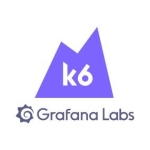We use it for doing automation testing, and there are various teams that use it for performance testing, load testing, etc. For ALM, we use it to create requirements, test labs, and test plans and get our test results in.
LoadRunner Enterprise has helped our organization in being able to document everything and maintain the history. This way, in the future, if the product gets enhanced or new features get added, you know what was tested previously, and then you also have the new stuff. You have the history of those changes and all the testing that has been done.
We use the TruClient feature for browser-based testing, but I am not the end user for it. My guess is that it is helpful for reducing scripting work.
LoadRunner Enterprise has affected our users. Testing is obviously a must before you release a software product. The fact that you can automate some of the testing, and you can do stress testing, performance testing, and simulate a load as if users are actually using it helps a lot. You better understand how the application will operate when it gets into production, and if there are issues, you can spot those early on.
LoadRunner Enterprise has helped streamline our testing processes. We have a process in place for users who need access to it. There is a governance team for the rules and how the product should be used and not. There is a little bit more structure. Based on what I have heard in the organization, it does appear to help them. LoadRunner Enterprise makes it easier for them to be able to do their tasks. They can automate things without them having to manually do it.
LoadRunner Enterprise has helped save us time, but I do not have the metrics.
LoadRunner Enterprise has helped improve our product quality. We can spot issues early on. That helps a lot. This way, we are aware of the issue before we go live in production. We can remediate it before the product goes live.
With ALM, being able to write our test scripts and being able to document our test results are valuable. That comes in handy. This way, we have a record of the things that have been tested. There are also workflows that we can create, which are very helpful.
With LoadRunner Enterprise, doing various types of performance testing, load testing, and automation testing has been very helpful for some of the teams.
I work more on the administration side. I am not a daily user, but especially during this conference, we are seeing that everything is going to the cloud. We are trying to see what are some of the benefits of going to the cloud.
I have seen some users report some issues, but I have personally not had any issues.
My organization was already using it when I joined, but I have personally been using it for over three years.
I have not seen any stability issues. I have seen some users report some issues, but we will usually open a case if we cannot figure it out.
With LoadRunner, you get load generators. You can add more as needed. Its scalability is fine.
We get our support through another vendor.
When I joined the team, they were already using it, so I do not know what they were using before.
I have been involved in the upgrades. If it is a patch or something small, it is less time-consuming, but if it is a major upgrade, it takes more time and more planning. We need to assess how long it will take, what resources are needed, and do we need to request new servers.
My guess would be that we have seen an ROI.
Overall, I would rate LoadRunner Enterprise a nine out of ten.




















There are some spelling mistakes, kindly correct this please.